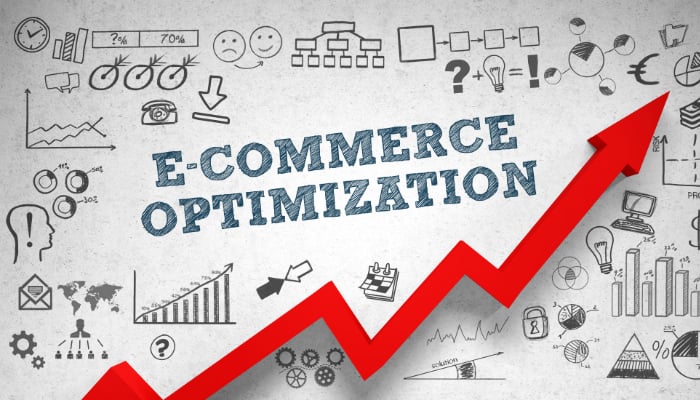Predictive Analytics: The Future of Quality Management Systems
In today’s competitive business world, managing quality and following rules are extremely important. Bringing Predictive Analytics into Quality Management is a significant change that can help companies. This new technology can improve the way companies handle quality management. It can also give them an advantage over their competitors. By using data analysis, companies can now predict issues before they happen. This ensures excellent products and compliance with standards. Let’s explore how predictive analytics sets new standards in quality management systems and what the future holds for this innovative approach.
Understanding Predictive Analytics in Quality Management
Predictive Analytics uses advanced statistical models, machine learning algorithms, and data mining techniques. It goes through large amounts of historical data to find patterns and trends that are not easily visible. In Quality Management, this analytical approach turns raw data from various manufacturing and operational processes into useful information. By carefully analyzing this data—such as machine performance metrics, process parameters, and environmental conditions—predictive analytics tools can predict potential quality issues or deviations from compliance standards before they occur.
This predictive capability changes Quality Management from being reactive to being proactive. It allows quality assurance teams to anticipate defects, process failures, and non-compliance risks. This allows for corrective actions to be taken ahead of time, which greatly reduces downtime and mitigates risks. By using predictive analytics, organizations can efficiently allocate resources to areas of highest impact. This optimizes quality control measures and significantly reduces the cost of poor quality. Additionally, the continuous learning loop in machine learning algorithms ensures that predictive models improve their accuracy over time. They adapt to new data and evolving production dynamics.
The key to making Predictive Analytics work well for Quality Management is combining data from different sources. This means bringing together details about production, suppliers, customer feedback, and market trends. Doing this gives a complete view of what affects quality, making predictive insights stronger.
Enhancing Product Quality with Predictive Insights
Using predictive analytics in Factory Audit systems helps companies greatly improve product quality. These systems use advanced statistical and machine learning methods to continuously monitor and analyze production processes in real-time. This constant monitoring detects variations and potential defects that could affect product quality, allowing immediate corrective action. The detailed insights from predictive models reveal the many factors influencing product integrity—from material properties and machine settings to environmental conditions.
This real-time analysis and ability to respond quickly is vital for maintaining the manufacturing process integrity, ensuring products meet and exceed set quality standards. Additionally, predictive analytics is useful beyond immediate quality assurance, informing long-term product development. By identifying patterns and trends in the data, manufacturers gain valuable understanding about product performance and lifecycle. These insights aid in enhancing product designs, material selection, and manufacturing techniques to prevent future quality issues while improving durability and functionality.
Quality management is a crucial aspect of manufacturing processes. Integrating predictive insights allows companies to optimize production and address quality issues proactively. By aligning production parameters with predictive forecasts, organizations can prevent quality anomalies and drive continuous improvement in product development.
Achieving Compliance Through Proactive Risk Management
In regulated industries like pharmaceuticals, automotive, and food & beverage, predictive analytics plays a key role in managing compliance risks. These industries face strict standards, requiring careful monitoring. Predictive analytics uses algorithms and data mining to identify and mitigate compliance risks before they escalate into costly violations.
By incorporating predictive analytics into their compliance strategies, companies can leverage historical and real-time data to understand compliance risk factors thoroughly. This involves analyzing data from various sources, such as production logs, quality control tests, and supplier audits, to forecast potential non-conformances. This proactive risk management approach is essential to avoid regulatory issues, hefty fines, product recalls, and reputational damage.
Forecasting tools can help firms watch for rule changes. Predictive models adapt when laws evolve. This keeps companies compliant as standards shift, key for fast-paced industries. Embedding predictive analytics within quality systems prevents risks. It builds a culture focused on improving standards constantly. This strategic approach shows commitment to quality, earning trust from stakeholders. Businesses stay successful in the market long-term.
Integrating Predictive Analytics into Existing Quality Management Systems
Adding predictive analytics to quality management needs planning. First, audit current systems to find critical data sources. Use historical quality data, real-time production stats, supplier quality metrics, and customer feedback. Next, tailor predictive models to quality and compliance goals. Customized tools align with organizational aims for better results.
Successful integration involves upgrading employee skills. Workers must understand how predictive analytics tools work and their benefits. This equips them to interpret data insights correctly and make good choices. This step promotes a culture valuing data-driven decision-making, which is vital for modern quality management.
Additionally, ensuring predictive analytics solutions can grow is essential. As businesses expand and data increases, the analytics system must adapt without performance issues. This includes not just technical scalability but also continually improving predictive models to handle new data types, quality standards, and rules.
By identifying data sources, customizing models, training staff, and ensuring scalability, organizations can effectively integrate predictive analytics into quality management systems. This sets the stage for improved operational efficiency and quality excellence.
The Future of Predictive Analytics in Quality Management
Predictive analytics within quality management systems is headed for major advancements. Emerging trends suggest increased integration of sophisticated artificial intelligence and machine learning frameworks. These will further enhance predictive accuracy and operational efficiency. The rise of these technologies ushers in a new quality assurance era. Decision-making will rely on deep, actionable insights from more complex and nuanced data analysis.
Predictive analytics is turning into a massive help for quality management. It is getting mixed with the Internet of Things (IoT) technology. More IoT devices are coming into factories. This will give a huge amount of data about the production process in real-time. Combining IoT and predictive analytics means quality management can make quick changes based on this real-time data.
Predictive analytics is also making quality management more connected. In the future, predictive models will be able to share data across different quality systems. This breaks down barriers and makes quality assurance more unified. Organizations will work better together on quality.
As artificial intelligence (AI) and machine learning (ML) get better, predictive analytics tools will become more precise. They will also analyze data faster. This speed is key for keeping up with faster manufacturing and more complex quality rules. In short, predictive analytics and quality management are being revolutionized by new technology. This will transform how quality is assured in today’s digital world.
Overcoming Challenges in Implementing Predictive Analytics
Making Predictive Analytics work in Quality Management can be tricky. The biggest issue is having the right data. Accurate predictions depend on good, reliable data. To fix this problem, companies need strong data management practices. They must put systems in place to collect, clean, and organize data properly before using it in predictive models. This includes clear processes for gathering data and technology to fix errors or enhance datasets.
Another challenge is the complexity of predictive models themselves. Even though powerful, these models can be very difficult to build and manage. They often require special skills. To use them more widely, the models need to be simpler without losing their predictive power. User-friendly analytics tools that hide complexity can help. With this, Quality teams can benefit from predictive insights without needing deep statistics knowledge.
There is also a lack of skilled people who can interpret predictive analytics and turn insights into actions. Inspection companies must train Quality professionals in analytics. They should create programs to improve analytical abilities. There should be opportunities for learning and teamwork between data scientists and Quality assurance staff. A culture of continuous learning bridges this gap.
Partnerships with analytics solutions providers open opportunities. Access to advanced tech and experts ease implementation. Focused efforts in key areas unlock predictive analytics for quality management. Organizations then improve quality, meet compliance smoothly.
Conclusion
Predictive analytics merges with quality systems, transforming quality predictions and issue prevention. Strategic uptake streamlines operations, boosts product integrity, ensures regulation adherence. Challenges exist, but strategic value and long-term benefits outweigh them. In the tech-driven quality future, predictive analytics innovates, driving operational efficiency and superior standards.







